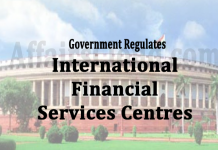On April 16, 2020, According to the study, Mapping India’s Energy Subsidies 2020 released by the International Institute for Sustainable Development (IISD) and the Council on Energy, Environment and Water (CEEW), India’s energy subsidies drops 35% from Financial Year FY17 to FY19, while its oil and gas subsidies increased by 65%. Key Points
Key Points
i.The study highlights that the health and economic crisis caused by COVID-19 will impact the subsidy expenditure.
ii.The crash in world oil prices and the government’s (gov) economic stimulus packages will be key factors shaping the energy sector in the coming months.
iii.It is noted that there are already signs that support for renewable energy would increase again, but with the shocks from COVID-19 it is now critical to stay on track.
iv.The economic recovery will be crucial to determine future trends in the energy sector. The petroleum product subsidies will surely fall in 2020 & other energy markets will be shaken.
v.Prior to the COVID-19 crisis, many new and larger clean energy subsidies were announced, such as KUSUM, Phase 2 of the Rooftop Solar and FAME-II, the resources after the crisis will be unprecedented.
Major Projections of the report
- In the last 6 years, India has shifted significant public resources toward clean energy. By more than half the fossil fuel subsidies have dropped & by more than three and a half times the subsidies for renewable energy and electric vehicles have increased since 2014.
- It indicates an opportunity to reform the coal subsidies, which is estimated at Rs 15,456 crore in FY 2019 & have remained unchanged for the past 6 years. The researchers emphasized the combined costs of subsidies and the social impacts of coal will increase gov revenues from coal taxes and surcharges paid to Indian Railways.
- The electricity transmission and distribution is another focus for reform which has the largest share in subsidy, the gov has supported Rs 79,671 in FY 2019 and the target should be to provide assistance to those most in need. The experts noted that huge ransom for the sector is ineffective to reduce the magnitude of these subsidies.
- One of the smallest recipients of the subsidies is the electric vehicles sector, researchers noted that although subsidies for electric cars have increased 11-fold since FY 2017, it is important to continue to raise ambition on clean transport to meet India’s target of 30% of new vehicle sales to be electric by 2030.
About CEEW:
Headquarters– New Delhi, India
Founder & Chief Executive Officer (CEO)– Arunabha Ghosh
About IISD:
Headquarters– Manitoba, Canada
President & CEO– Richard Florizone




